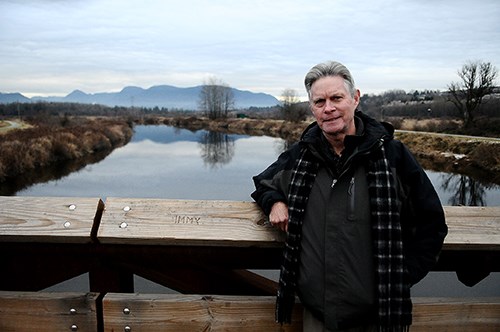Even after more than a decade, I’m still touched by a sense of wonder. Think about it: 40 people giving up three and a half years of their lives just to talk about water.
More specifically, water for fish and the environment. For three-plus years, watershed residents, First Nations, government regulators and the “consultative committee” of the Coquitlam water use planning process — assisted by an army of fish experts — strived to reach consensus on how much water BC Hydro should release for fish.
For almost 100 years since B.C.’s oldest dam was built, fish in the Coquitlam River had received barely a trickle of water. The rest went to power Hydro’s turbines and to provide water for Greater Vancouver’s burgeoning population. But times were changing and, finally, early in 2003 — and after one final marathon session for good measure — everyone at the table agreed to a new fish flow, ironically dubbed “share the pain option 6.”
The pain may have had something to do with the lengthy process but mainly referred to the fact that there was not enough water to satisfy all needs. Hydro got less water but people still had to drink. Even so, fish did much better than many dared hope. Base flows were increased nearly three-fold and were also seasonally adjusted to better meet the “life history” needs of salmon, mainly spawning, rearing and migration. The consultative committee also agreed to add something bold to the new water use plan, known as a “flushing flow,” meant to flush silt from the river’s gravel to improve the prospects of both baby salmon and their insect food.
Since the new flow regime was implemented, the prospects for fish — and people — have improved dramatically in the Coquitlam River watershed. More salmon are regularly seen.
The river is cleaner. And it no longer suffers the ignominy of being found on the Outdoor Recreation Council’s Top 10 list of endangered rivers.
The consensus agreement on a water use plan for the Coquitlam River, and many others reached under BC Hydro’s water use planning process, also serve as shining examples of our increasing awareness of the value of environmental flows — for both nature and people.
Last month, the province enacted its new Water Sustainability Act, also in the works for years. The WSA contains important provisions for local decision-making, improved monitoring and protection of groundwater, as well as “environmental flow needs” for the environment.
Unfortunately, despite a commitment made in B.C.’s 2009 Living Water Smart program, the WSA does not propose to regulate environmental flows. It only plans to include them as a policy, meaning they will be unenforceable and subject to the discretion of decision-makers.
Low flows in rivers and streams are a particularly prominent threat to salmon and other aquatic life. And the situation will only worsen, no thanks to the looming spectre of further climate change.
It doesn’t have to be this way. The WSA could yet be a model of how to do things right if government commits to developing strong and enforceable regulations to protect water flows for fish and the environment.
When those 40 die-hards devoted three and a half years of their lives to establishing new flows for fish, they were doing much to pave the way for ordinary citizens to have a significant say in the health of watersheds, and the people who live there. Although the new WSA is a major improvement over B.C.’s century-old Water Act, it can and should be much more.
--Craig Orr is conservation advisor with Watershed Watch Salmon Society.



